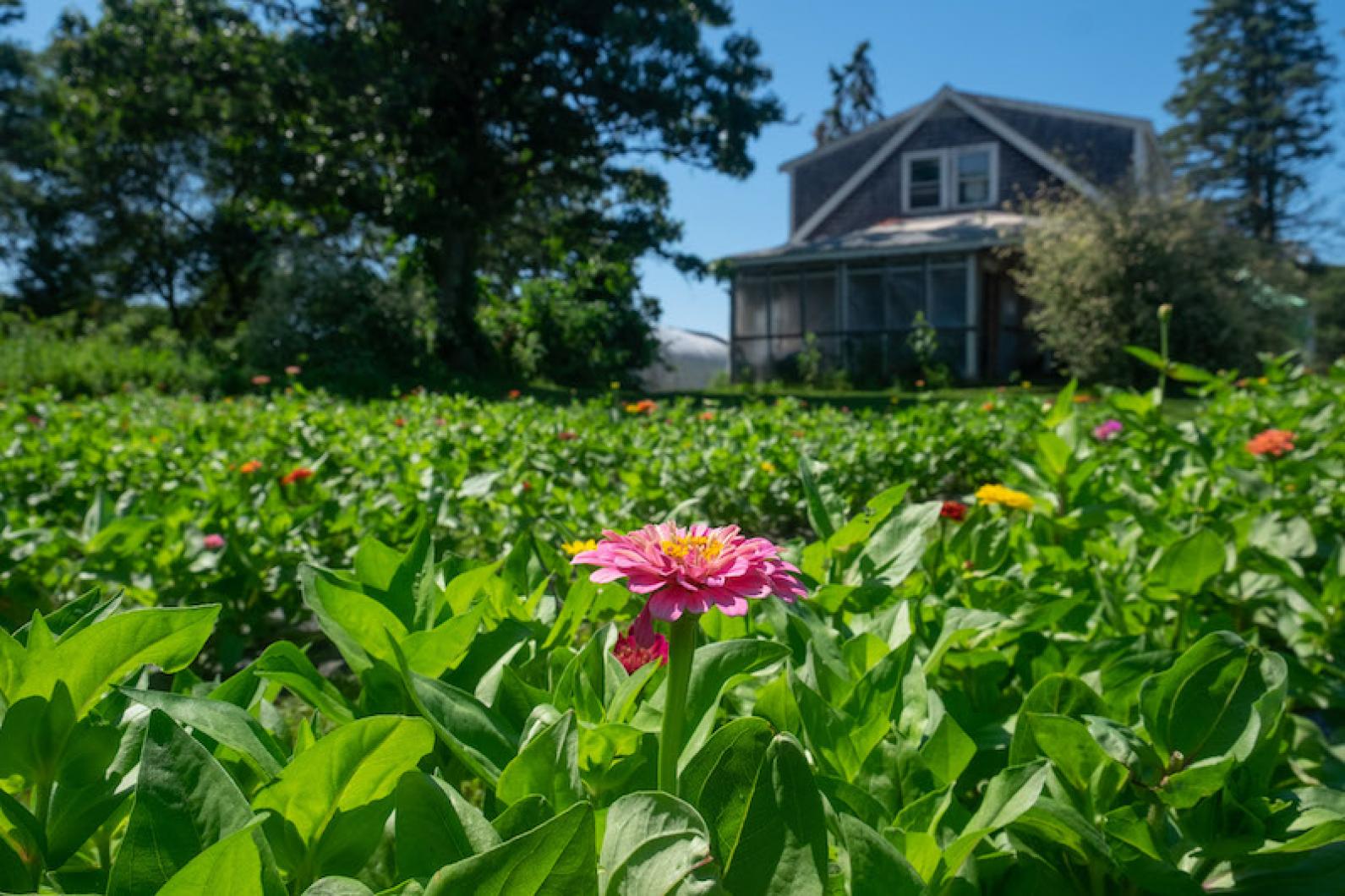Every other morning, I begin my day harvesting flowers, working alongside my friend Lucy Leopold.
We start early and pick quickly, trying to harvest all the blooms before the cool of the morning has worn off. We strip each stem of its leaves, collecting the growing bundle in our left hands until we can no longer grasp the bunch. Each handful is then placed in a bucket of cool water and tucked into the shade of a farm truck, giving the blooms a chance to rehydrate as we move on to the next row.
We have nearly 30 different types of flowers, and each one is harvested slightly differently. The zinnias have a tell-tale wobble when they are not quite ready. The cosmos and snapdragons are best just as the buds are beginning to unfurl. The lilies are always picked with most of the buds still closed, while the dahlias must be harvested fully open.
Bumble bees pass from bloom to bloom ahead of us. Occasionally, one of us will surprise a honey bee mid-pollination who is quick to defend herself with a rapid sting. We then must pause and hunt on the edges of the field for a plantain plant, a ubiquitous medicinal weed known for its ability to heal wounds. We chew the leaves and place them directly on the sting, experiencing relief a few moments later.
Then it is back to harvesting.
After three hours we have lost our shade. We load each bucket into the truck, usually squeezing in the last bucket or two, sometimes with one more on the lap of the passenger. We head back to our packing shed, where we will spend a few more hours quickly bunching and bouqueting. We need enough blooms to supply a 43-member weekly CSA and to keep our farmstand well stocked.
I am a vegetable grower at heart, but like many small farmers, I have expanded into flower production for the additional income. Unlike a zucchini or an eggplant, a zinnia can be sold at a price that more-closely reflects the work it takes to grow it.
Government subsidies and large-scale agriculture have left the American public with an unrealistic perspective on the cost of our food. Six dollars per pound for an heirloom tomato is deemed expensive. In reality, even at these seemingly elevated prices, small-growers are barely able to cover the costs of production.
In the cut-flower world, local growers are often competing with large-scale, conventional farms from overseas. Blooms are imported in every season, often doused in chemicals that are illegal in the United States, and preservatives are used to prolong the life of each stem. This gives the large-scale growers a competitive edge and forces local-growers to lower their prices.
However, even with this competition, local flowers are much more profitable than local vegetables. The demand for Island flowers is growing, and farmers here have stepped up their production to meet the need.
Some growers, like Krishana Collins of Tea Lane Farm, began as vegetable farmers and then transitioned into strictly flower growers. Krishana now has a thriving farmer-florist business in Chilmark where she essentially operates two separate businesses: one growing flowers for her roadside stand and farmer’s market booth, and the other as a florist, working with clients to design and install flower arrangements for weddings and other events.
Other growers focus more on wholesale flower production. On a recent summer evening, Robyn and Simon Athearn of Morning Glory Farm hosted an open house for florists at their new flower field in West Tisbury. In the last year, Robyn and Simon have dramatically increased the farm’s flower production. On four acres of land and with a crew of eight women, they grow enough blooms for the always-bustling Morning Glory farmstand and to supply Cronig’s Market with 50 bouquets a week. They hope to attract more Island florists and to decrease the number of imported stems.
Still others are offering flower workshops. The Grey Barn and Farm in Chilmark has set aside space for a new flower barn and is hosting summer flower workshops in collaboration with Morrice Florist of Vineyard Haven.
It is easy to romanticize the life of a flower farmer. But like all agriculture, so much in a season depends on uncontrollable and unpredictable factors. Strong winds can lay crops flat in the field, heat-waves can cause blooms to wilt, and damp mornings can lead to funguses and mildews. There is always an endless list of tasks to accomplish and too few hours in the day.
But some days are smooth. The blooms are sturdy, each planting is strong, bouquets come together effortlessly. In the words of Robyn Athearn, these days can feel like you are “harvesting joy.”
Lily Walter is the owner of Slip Away Farm on Chappaquiddick.




Comments (5)
Comments
Comment policy »